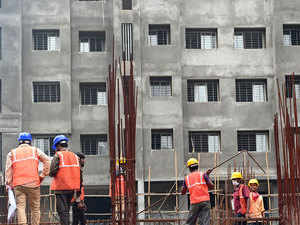 AFP
AFPThe Salaria Officer’s Enclave, built a decade ago to house officers from the three armed forces, is at the centre of the controversy given the quality of work and structural infirmities found by an expert team, including weakened columns and beams that could compromise the safety of the residents.
It is learnt that the scope of the inquiry was to ascertain the responsibility for the poor construction and look into possible financial impropriety.
The officer’s enclave was part of the Married Accommodation Project (MAP) of the defence ministry and was handed over to the Military Engineering Service (MES) in May 2010. The complex is named after the late Captain Gurbachan Singh Salaria, India’s only Param Vir Chakra awardee for a UN Peacekeeping Mission.
There have been complaints about MAP accommodation in the past too, with shoddy construction costing the life of the young child of a Navy couple in Goa in 2017 who fell from the sixth floor after a window grill gave way.
While the army did not respond to queries sent by ET, sources said that the Salaria Enclave has been facing severe problems including leakage of water, serious termite infestation and corrosion of the structure.
More worryingly, a structural audit conducted by the national council for cement and building materials in 2018 found that the key columns and beams were weak and there were visible cracks in the concrete. The study found that the life left for some of the structural elements was just two years while others had nine years left, against the normal range of over four decades.
(Catch all the Business News, Breaking News, Budget 2024 Events and Latest News Updates on The Economic Times.)
Subscribe to The Economic Times Prime and read the ET ePaper online.
Read More News on
(Catch all the Business News, Breaking News, Budget 2024 Events and Latest News Updates on The Economic Times.)
Subscribe to The Economic Times Prime and read the ET ePaper online.









 Get Unlimited Access to The Economic Times
Get Unlimited Access to The Economic Times
